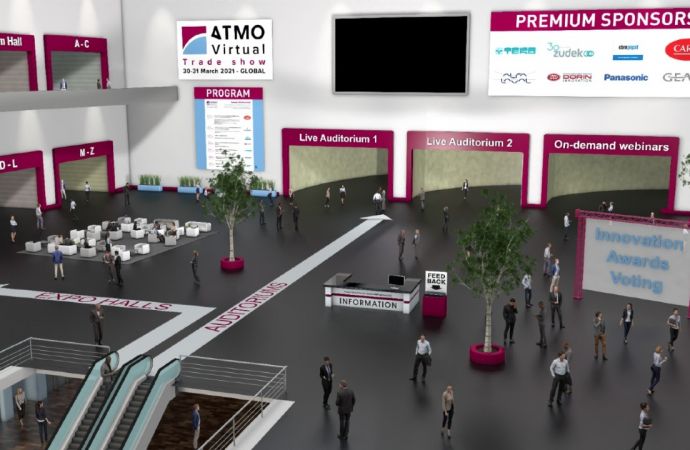2.5 years after initial SNAP approval of R290 in stand-alone commercial refrigeration, the US EPA has granted Red Bull permission to use R600a for its coolers, allowing a reduction in the energy consumption of its cooler fleet by up to 20%. Despite the breakthrough, this late permission translates to a lost potential of deploying tens of thousands of HC units in the US. The policy relevance for Europe was discussed during ATMOsphere Europe 2013 conference.

Addressed to Red Bull and cooler supplier A/S Vestfrost, a July 2013 US EPA letter confirms as complete their joint submission under the Significant New Alternatives Policy (SNAP) Program: “Pending EPA’s decision concerning the substitute’s acceptability, you may sell and import R600a for use in stand alone commercial refrigerators, coolers and freezers as of July, 31 2013. You may also sell and import such equipment containing R600a as of July, 31 2013”.
Jürgen Brenneis shared Red Bull’s experience in adopting hydrocarbon based coolers for its global cooler fleet at the ATMOsphere Europe 2013 conference on natural refrigerants, held in Brussels on 15-16 October. To date, Red Bull has placed more than 457,000 plug-in refrigeration units with natural refrigerants, and its 2014 global procurement (with the exception of Japan) will be done 100% with hydrocarbons. Brenneis stressed the importance of removing regulatory barriers to natural refrigerants and setting the right regulatory framework for their wider scale adoption.
100% HFC ban in Europe the only way to greater and faster adoption of natural refrigerants in plug-in units
Based on the experience with the SNAP submission in the US, Brenneis discussed the lessons learnt that could be applicable for setting the right regulatory framework for larger scale transition to natural refrigerants for plug-in units in Europe.
Although there are no regulatory barriers in Europe to using natural refrigerants in plug-in equipment, there is still a lot of lost potential for broader scale adoption, as far as small end users such as kiosks and on premise accounts (bars, restaurants, hotels) are concerned, who unlike food retailers do not have strong sustainability approach. “If we would have in our regulation a 100% HFC ban, we could also tackle some of the accounts and some of the placements which are not so much in focus right now”.
To put this lost potential into perspective, Brenneis explained that about 40% of approximately of the 160,000 coolers that they place every year worldwide are actually placed in this type of on premise outlets. “We see that the only potential to have also these accounts fully aligned with the natural refrigerant strategy, would be to have the legislation in place requiring to use it”.
Jürgen Brenneis shared Red Bull’s experience in adopting hydrocarbon based coolers for its global cooler fleet at the ATMOsphere Europe 2013 conference on natural refrigerants, held in Brussels on 15-16 October. To date, Red Bull has placed more than 457,000 plug-in refrigeration units with natural refrigerants, and its 2014 global procurement (with the exception of Japan) will be done 100% with hydrocarbons. Brenneis stressed the importance of removing regulatory barriers to natural refrigerants and setting the right regulatory framework for their wider scale adoption.
100% HFC ban in Europe the only way to greater and faster adoption of natural refrigerants in plug-in units
Based on the experience with the SNAP submission in the US, Brenneis discussed the lessons learnt that could be applicable for setting the right regulatory framework for larger scale transition to natural refrigerants for plug-in units in Europe.
Although there are no regulatory barriers in Europe to using natural refrigerants in plug-in equipment, there is still a lot of lost potential for broader scale adoption, as far as small end users such as kiosks and on premise accounts (bars, restaurants, hotels) are concerned, who unlike food retailers do not have strong sustainability approach. “If we would have in our regulation a 100% HFC ban, we could also tackle some of the accounts and some of the placements which are not so much in focus right now”.
To put this lost potential into perspective, Brenneis explained that about 40% of approximately of the 160,000 coolers that they place every year worldwide are actually placed in this type of on premise outlets. “We see that the only potential to have also these accounts fully aligned with the natural refrigerant strategy, would be to have the legislation in place requiring to use it”.
MORE INFORMATION
Related stories



